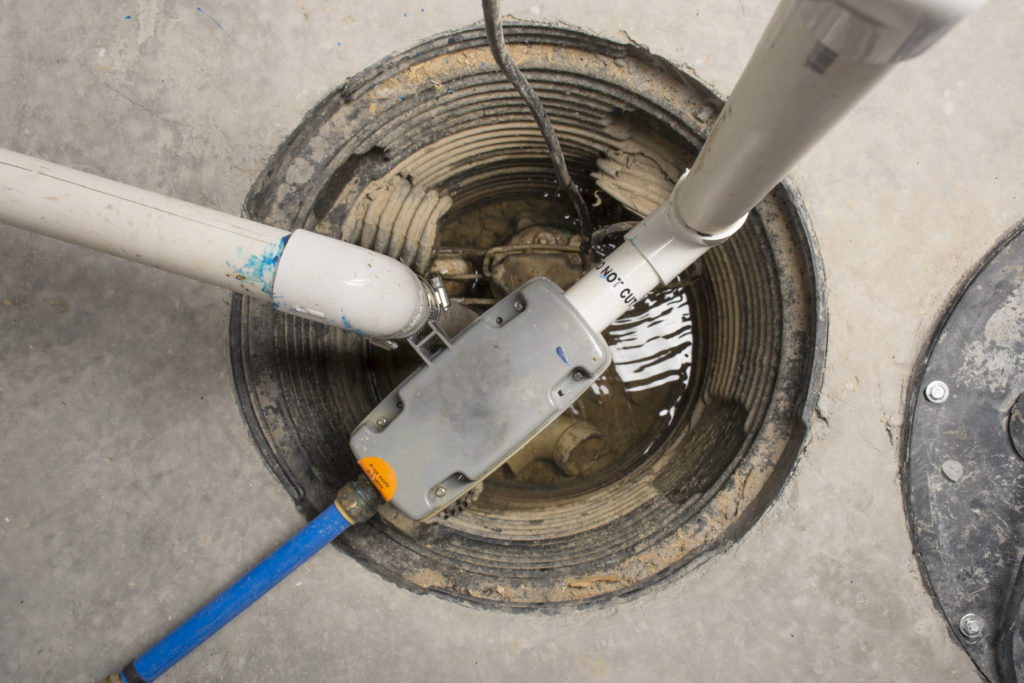Summer brings barbecues, baseball, swimming, warm weather, and RAIN. Lots of rain can flood basements if you don’t take proper measures. Now, not ALL basements have a sump pump, but if yours does, it’s important to know what you can do to make sure when you need it, it works properly. Nobody wants to wake up after an overnight storm to a flooded basement, and a failed sump pump.

As of August 19th, 2019, the total precipitation at Minneapolis-St. Paul International Airport reached 29.64 inches. This is the second wettest year, right after a whopping 31.75 inches that fell in 1892. What exactly can a sump pump do to save you the pain of a flooded basement during these rainy months?
What Does a Sump Pump Do?
Down in the lowest part of your basement, is a sump basin that manages and collects water levels as they rise and fall during rainfall, flooding, the dreaded winter melt, etc. Inside that basin is a sump pump that prevents your basement from flooding by pumping out any accumulated water. Its main purpose is to keep your basement dry and prevent standing water and mold growth. Sump pumps should last up to 10 years, with regular maintenance and upkeep. To maintain its quality, and prevent failure, there are some steps you can take to test your sump pump throughout the year, before a chance of flood.
Preventative Maintenance Tips
Back-Up Battery – Sump pumps run off battery power and if during a heavy storm you lose power, that pump will continue to run on reserve battery power temporarily. However, for a prolonged electric outage, you want to make sure you have a backup battery or power source to run the pump to avoid flooding and standing water. A heavy storm + power outage = lots of water building up, with nothing but mops and buckets to stop it. Don’t let that happen to you!
Water Sensor – Purchase a water sensor! There are water sensor alarm systems you can set up in or near your sump basin or on the basement floor that will sound an alarm when it detects water. There are now sensors that are app capable and will text right to your phone that your basement floor is wet. This can help prevent flooded basements and failed sump pumps before you walk down there and discover it yourself. Which at that point can be too late.
Annual Test – By testing your sump pump every year, you can work at preventing any mishaps during a time when it needs to work. Make this your opportunity to do any preventative maintenance, and repairs on it before it’s an emergent situation. For those living in areas with high flood risk, you may want to consider bi-annual checkups on your sump pump. Make sure all drain hoses are connected correctly, tightly, and are fully intact. Check for leaks, and make sure it’s working properly. Check your battery life and give it a run-through – turn off your power and make sure that backup power kicks in. Pour water into your sump basin and let it fill up to do the full test and ensure everything is in working order.
If Your Pump Fails – If your pump does fail on you, don’t panic, just keep in mind some tips for fast-acting flood control. You want to dry out your basement as quickly as you can, immediately removing all items that may have gotten wet. Mold can begin growing within 48 hours, so it’s important to get valuables, cardboard boxes, rugs, and furniture out and dried as soon as you can. Put fans and a dehumidifier in the basement to ensure the basement gets completely dry, and no dampness remains. In fact, if you have a moist basement to begin with, running a dehumidifier often can help alleviate dampness and prolong items stored down there. Lastly, contact your local ServiceMaster for a clean-up and/or damage assessment. They have some more tips on how to make sure your sump pump is working as it should here.
If you do find yourself with a failed sump pump and a mess in your basement, give us a call for all your clean-up needs!

